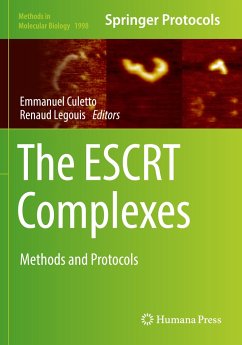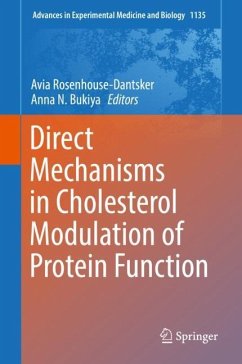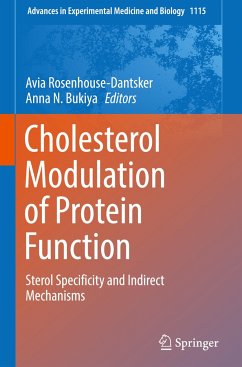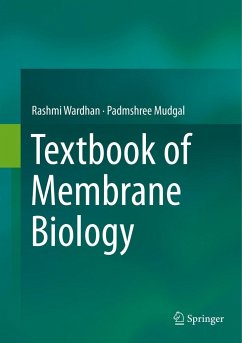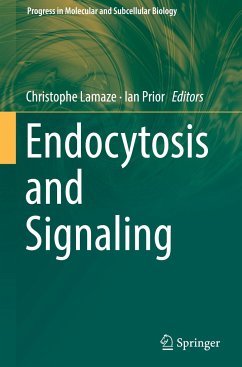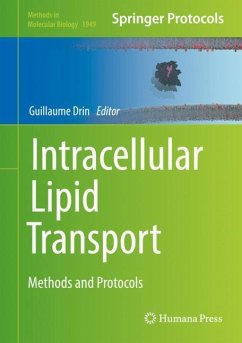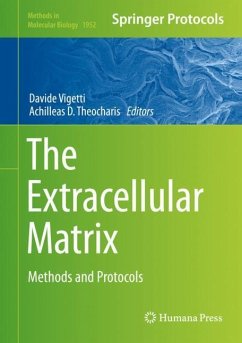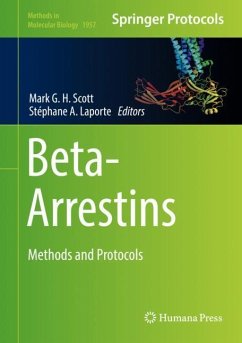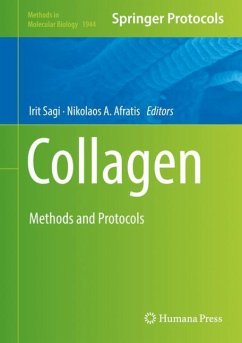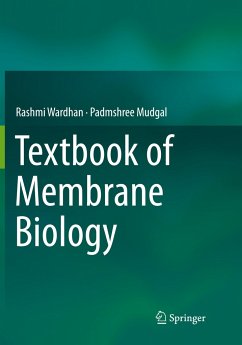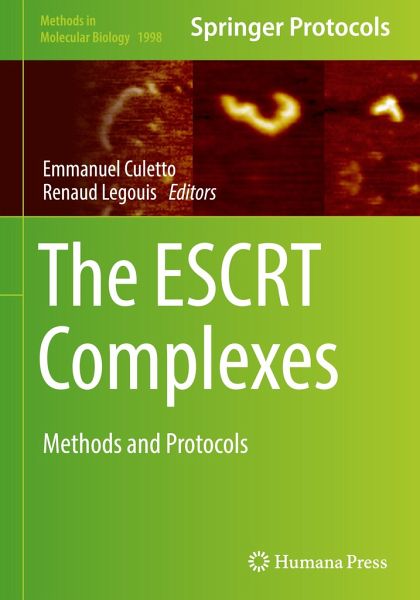
The ESCRT Complexes
Methods and Protocols
Herausgegeben: Culetto, Emmanuel; Legouis, Renaud

PAYBACK Punkte
57 °P sammeln!
This detailed collection gathers both established and recent technical procedures to study the Endosomal Sorting Complex Required for Transport (ESCRT) complexes in a wide range of biological systems: Archaea, A. thaliana, U. maydis, S. cerevisiae, S. pombe, C. elegans, D. melanogaster, and mammalian cells. Opening with a section on imaging techniques, the book continues with chapters covering biochemical approaches presenting strategies for production and characterization of recombinant ESCRT proteins, or of specific ESCRT protein domains, as well as genetic and proteomic experimental approac...
This detailed collection gathers both established and recent technical procedures to study the Endosomal Sorting Complex Required for Transport (ESCRT) complexes in a wide range of biological systems: Archaea, A. thaliana, U. maydis, S. cerevisiae, S. pombe, C. elegans, D. melanogaster, and mammalian cells. Opening with a section on imaging techniques, the book continues with chapters covering biochemical approaches presenting strategies for production and characterization of recombinant ESCRT proteins, or of specific ESCRT protein domains, as well as genetic and proteomic experimental approaches. Written for the highly successful Methods in Molecular Biology series, chapters include introduction to their respective topics, lists of the necessary materials and reagents, step-by-step, readily reproducible laboratory protocols, and tips on troubleshooting and avoiding known pitfalls.
Authoritative and practical,The ESCRT Complexes: Methods and Protocols serves as a compact guide for researchers interested in establishing an integrated approach to investigate the ESCRT machinery functions in cell biology.
Authoritative and practical,The ESCRT Complexes: Methods and Protocols serves as a compact guide for researchers interested in establishing an integrated approach to investigate the ESCRT machinery functions in cell biology.





